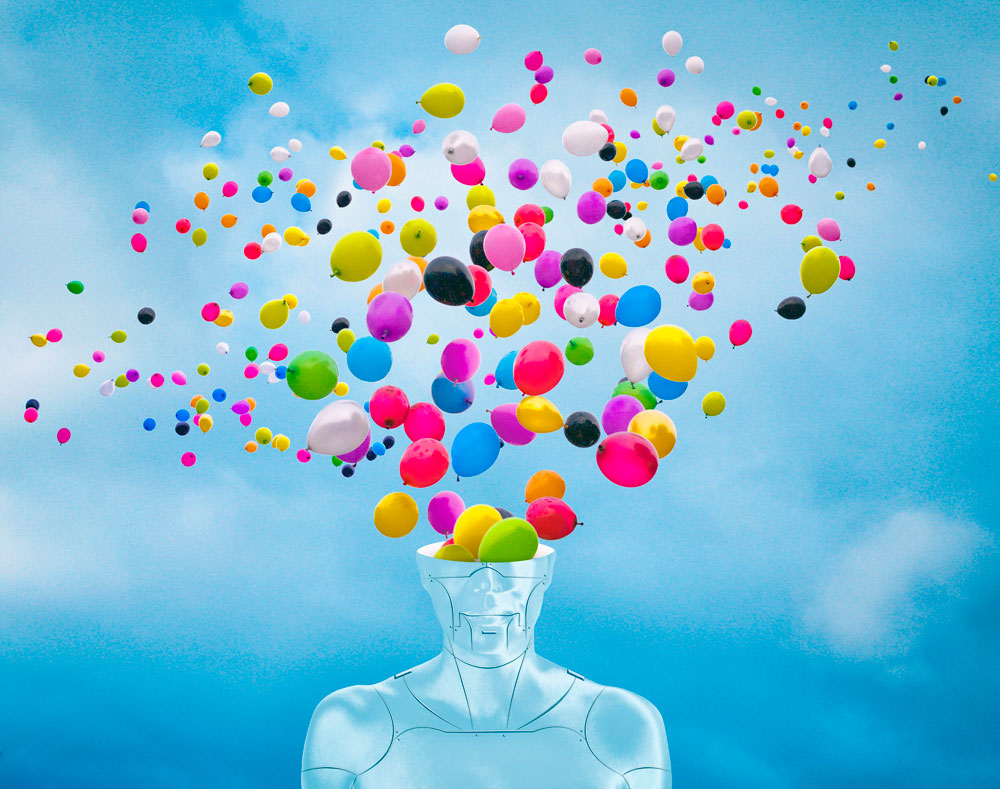Doctors measure pain on a scale of 0 to 10 where 0 is “no pain” and 10 is “the worst pain imaginable.” MRIs, CAT scans, and blood work are so precise yet pain levels are assessed by the patient. Is a patient’s 7 the same as the doctor’s perception of a 7? And should a 7 really be a 4? Pain thresholds vary and influence the amount of painkiller prescribed.
Another weird detail is how pain can come and go. When it acts up it can take over and feel like screaming fire engines. While other times, pain is quiet as a mouse. Pain can be moody, demanding, and unpredictable.
The good news for anyone suffering with pain is that there are creative ways to manipulate and reduce pain. Our imagination is so powerful that vivid imagery can stimulate our senses to activate the pain control centers in our body and release endorphins, the body’s natural analgesics. Conjuring up a specific and personal healing garden or imagining a cooling and numbing sensor, even revivifying a happy memory can work as a pain reliever and sometimes even a pain eliminator. There is a good deal of research showing how vivid imagery can help patients decrease pain perception as well as help alleviate stress and other triggers of pain.
When pain kicks in, the nervous system jumps into a fight-or-flight state. It creates tension in the body that can perpetuate the cycle of pain and stand in the way of healing. Meditation calms the nervous system allowing for pain relief and the body’s own self-healing mechanisms to work better. Calming the nervous system is a powerful healing tool.
A person can train to focus away from the sensation of pain by using selective focus like an athlete who gets injured during a game but continues to play. The focus on playing and winning is so intense that the awareness of pain does not register. We can tap into the same power of selected focus using meditation. Meditation helps the mind gradually become calm and still, as busy thoughts become quieter and less important. With practice, the ability to focus gets stronger. It becomes easier to direct your focus on your breath instead of the pain.
Pain is serious not only because it stops normal life but also because people who are dealing with pain sleep poorly which can impair cognition and magnify pain. Focusing obsessively on pain strengthens the brain’s pain pathways and makes it harder to think about anything else. Getting angry about it or catastrophizing can worsen pain significantly.
Mindfulness teaches you how to keep your attention in the present moment without any judgement. It becomes possible to notice the presence of pain, be aware of the pain, but remain neutral and non-judgmental. You become less critical and kinder to yourself and your body. Learning how to be less reactive to pain and not identifying with it makes mindfulness a valuable tool when pain kicks in.
New evidence shows that mindfulness meditation impacts the sensations of pain and the more emotionally aligned dimensions of the pain experience. Not only does mindfulness meditation reduce pain more than a placebo, but it also uses different neural patterns when reducing pain, indicating that it is not acting through the placebo effect. 1.
It is also worth mentioning the distinction between pain and suffering. Pain is a physical sensation and suffering contains all the feelings and interpretations we have about the sensation. This is useful because while we may at times be unable to control the sensation of pain, we do have the option of changing our interpretation of it altering the accompanying emotions.
An estimated 11.2% of the U.S. population suffers from chronic pain and the economic cost of pain is well over half a trillion dollars a year. Multidisciplinary pain care can include physical therapy, occupational therapy, medication management, injections, mindfulness, meditation, vivid imagery, pain psychology and acupuncture. Often, they work in concert offering the best results. 2,3.




